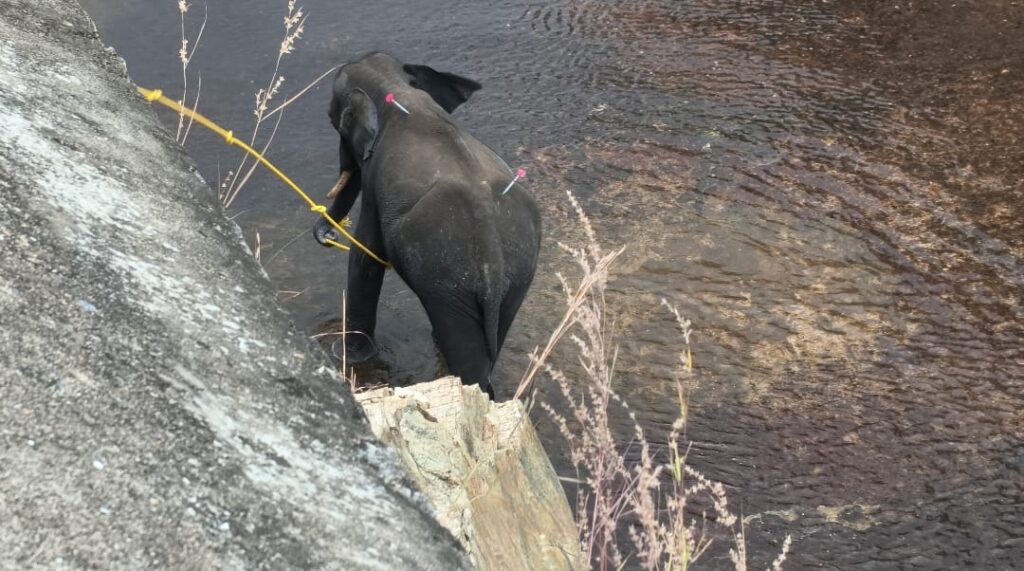
R S Tejus:
A network of deep hydel canals built along the Cauvery River near Shivanasamudra has increasingly turned into a danger zone for elephants moving through this landscape. These long, steep concrete channels feed several power generation structures in the region and cut directly across natural elephant paths or corridors.
When Green Minute News spoke to local forest officials in the Cauvery River belt how many such canals exist in this stretch, there was no clear information available. Without proper escape slopes or safe access points, these canals have slowly become death traps for elephants.
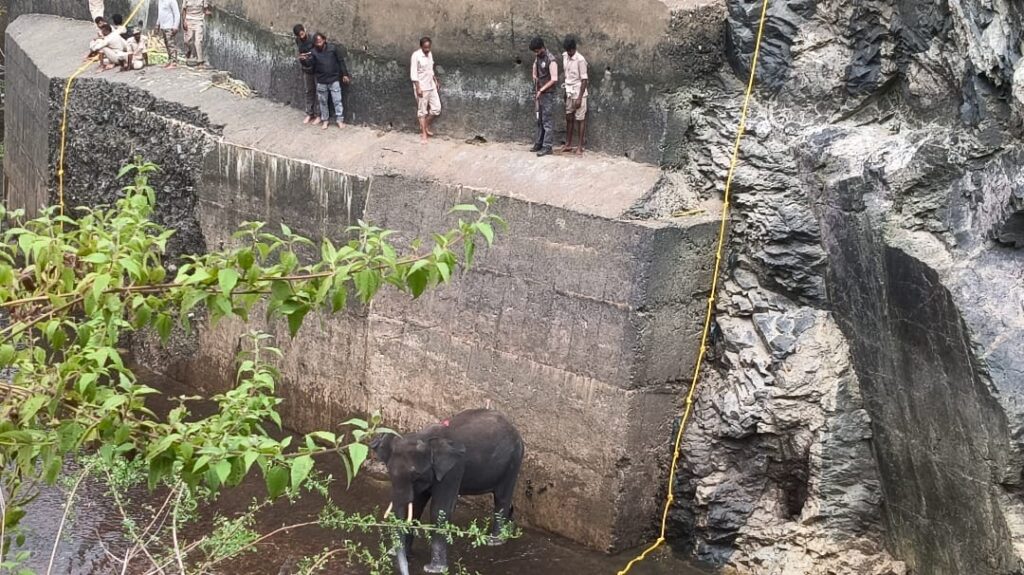
MULTIPLE HYDEL RELATED CANALS
There are multiple hydel-related canals running parallel to the Cauvery. With natural riverbanks shrinking and construction pressing up against forest edges, elephants are forced to walk down steep embankments. One slip is enough to trap them inside these walls of concrete and fast-moving water.
The most recent case involving a young male elephant stuck for nearly three days has once again brought this growing problem into focus.

ELEPHANT TRAPPED FOR THREE DAYS IN A DEEP CANAL
According to the Mandya Forest Division’s official note, male elephant, around 10-12 years old, entered the Pang-16 canal near Pavijaneshwara village on November 16 at around 11:15 AM. It had come to drink water and slipped into the channel, which is around 50 to 60 feet deep at several stretches.
Once inside the channel, the animal had no way to climb out. The concrete walls are almost vertical, the surface is slippery, and the water flow is very strong. For nearly three days, the elephant was stuck without food, growing weaker and barely able to stay afloat.
Local villagers, who noticed the animal struggling, informed forest staff. Forest, Ecology and Environment Minister Eshwar Khandre said that upon receiving the alert, he immediately contacted the Principal Chief Conservator of Forests (Wildlife) and the Chief Wildlife Warden and instructed them to begin rescue operations at once.

Continuous Efforts Under Tough Conditions
Senior officers including the DCF (Mandya), and Assistant Conservators from Mandya, Srirangapatna and Malavalli — along with RFOs, veterinarians, watchers and field staff reached the location quickly.
For two full days, they attempted multiple rescue methods. The teams tried creating mud ramps, laying ropes, and guiding the elephant towards shallower portions of the canal. But every attempt failed as the water current pushed the animal back.

Forest watchers and vets stayed at the site throughout, preventing the elephant from collapsing or being pulled under water by the strong currents. “The height of the canal and the force of the water made it a very dangerous operation,” an officer at the site said.
Pulled Out with a Crane from nearly 60 Feet
On November 18, after assessing the animal’s condition, officers decided that a crane was the only safe option left. Ropes and belts were carefully secured around the exhausted elephant, and in a slow, tense operation, the crane lifted it out from a depth of nearly 60 feet.

Once on stable ground, the veterinary team provided first aid and supportive care. After confirming that the elephant could stand and walk, the team guided it back towards the nearby forest patch.
Minister Khandre praised the teamwork and dedication of all officers, veterinarians, watchers and villagers who cooperated during the rescue.

A Larger Warning for the Cauvery Landscape
While this rescue ended well, this jumbo incident has raised fresh concerns about how hydel-linked construction along the Cauvery River is affecting wildlife movement. The entire Shivanasamudra–Malavalli–Kollegala stretch is a crucial elephant corridor connecting forests across the river.
But canals, diversion channels, roads and trenches have cut across these paths. With the natural riverbank narrowing, elephants are increasingly forced into dangerous man-made routes which has resulted in human created conflicts and finally their capture and relocation to elephant camps.
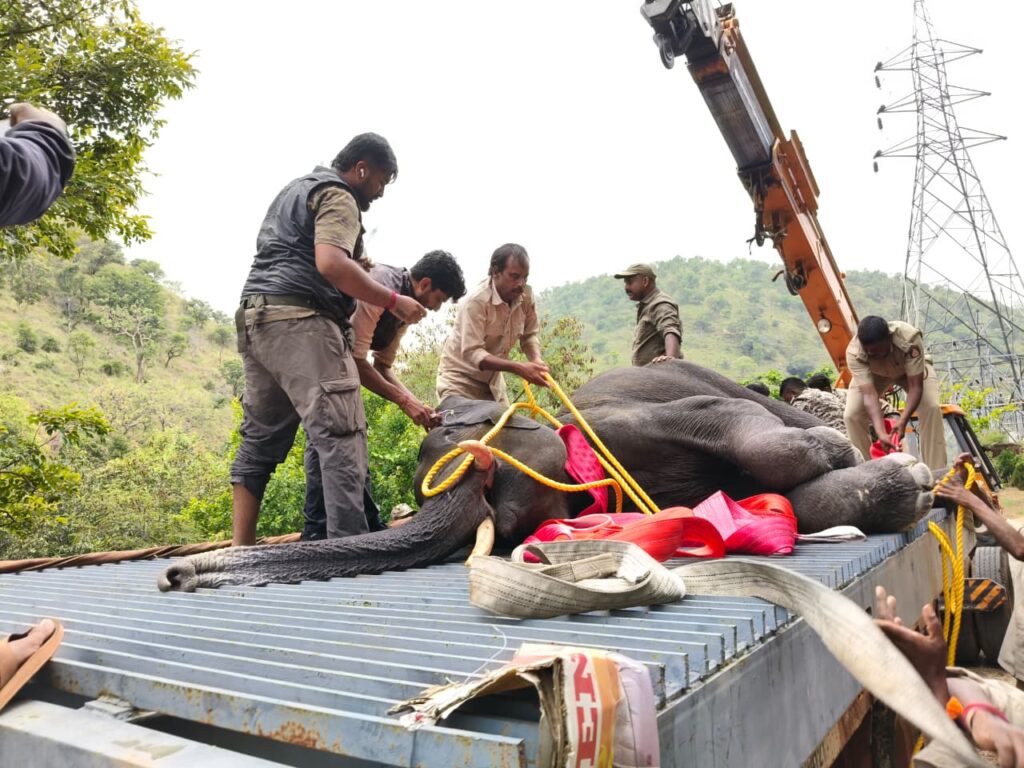
Safe drinking spots for Jumbos vanishing
“Elephants aren’t falling by accident,” a senior staff member said. “They are coming because their safe drinking places along the Cauvery River have reduced.”
Forest officers further say hydel canals must be redesigned with escape ramps, fenced-off danger points and wildlife-friendly slopes.
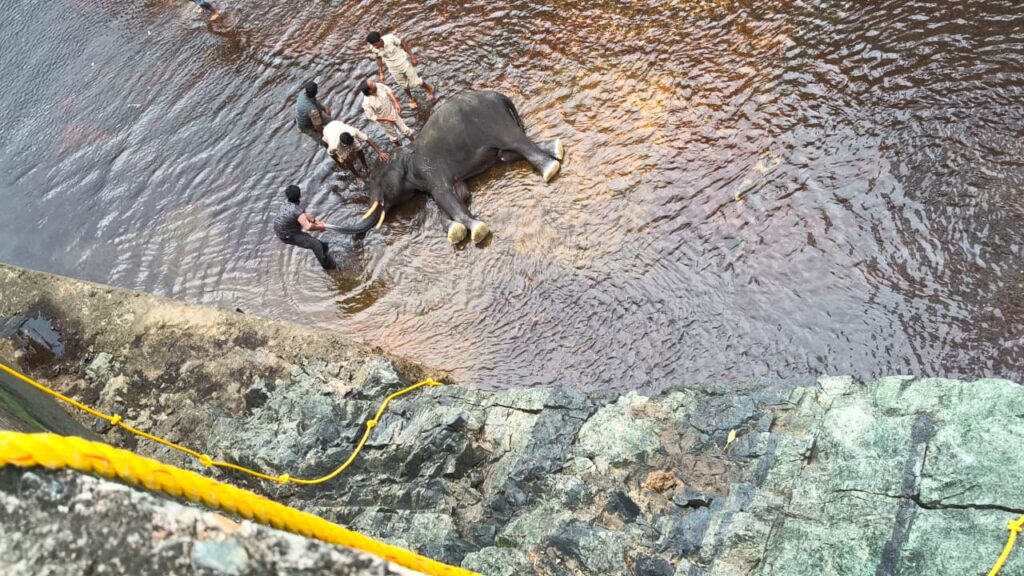
Concerns Over Mekedatu Balancing Reservoir Project
Experts also warn that larger upcoming projects, including the proposed Mekedatu Reservoir Project, could further disrupt elephant movement and drive the final nail into coffin of elephants.
A massive project of this scale with submergence of two wildlife ranges in the Cauvery Sanctuary, and constant machinery movement and new roads, could permanently change elephant corridors and their natural paths and push elephant herds not only towards villages but also cities like Bengaluru and Mysuru.
“If the current canals are already trapping elephants, a project like Mekedatu could multiply conflicts,” a forest officer opined.
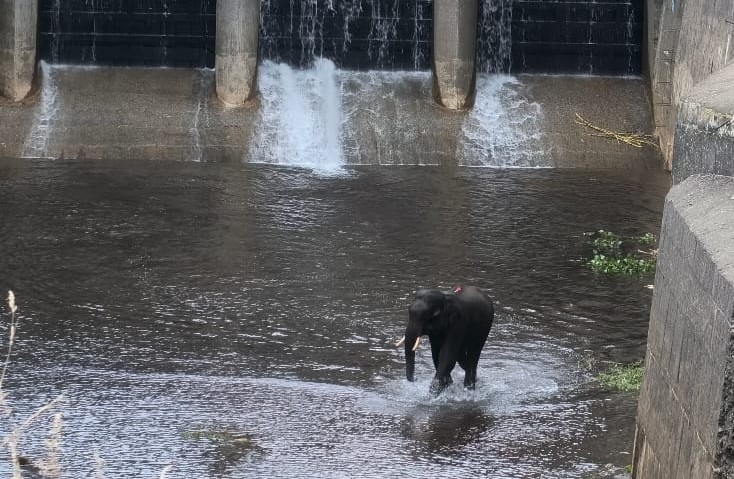
An Elephantine Rescue That Must Trigger Action
The Mandya team’s dedication ensured that this elephant survived. But forest officers agree that unless the design flaws of these canals are addressed, similar incidents will continue in the days to come.
For now, the rescued elephant has returned to the forest. But the landscape that trapped it remains the same and that is the real concern. Will elephants survive in the Cauvery landscape in the background of ambitious hydel projects being announced by politicians’ day in and day out?
(PHOTO CREDIT: ALL IMAGES FROM KARNATAKA FOREST DEPARTMENT)
